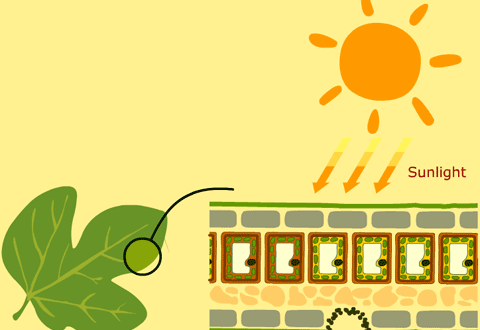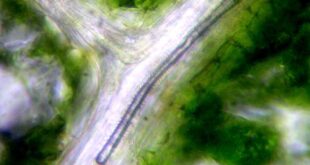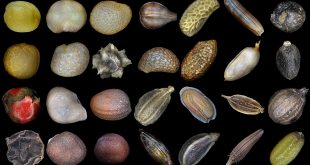Photosynthesis is a chemical reaction that takes place inside a plant, producing sugar type food for the plant to survive. Carbon dioxide, water and light are all needed for photosynthesis to take place. It happens in the leaves of a plant and the other green portions as well.
The process of photosynthesis is also known as oxidation-reduction process as through this process, water is oxidized (and oxygen emerges as a byproduct) and on the other hand, carbon-di-oxide is turned into starch by reduction reaction.
6CO2 + 12H2O + Light energy → C6H12O6 + 6O2 + 6H2O.
Best safe and secure cloud storage with password protection
Get Envato Elements, Prime Video, Hotstar and Netflix For Free
Best Money Earning Website 100$ Day
#1 Top ranking article submission website
Related Article
- Photosynthesis: Introduction & Requirements.
- Mechanism of Photosynthesis: Light Dependent Phase.
- Mechanism of Photosynthesis: Light Independent Phase.
- Factors of Photosynthesis.
Mechanism of Photosynthesis
Scientist Blackman (1905) first divides the photosynthesis into two different phases:
- Light dependent phase
- Light neutral/independent phase

A. Light Dependent Phase
The reaction of this phase only happens when there is light on thylakoid membrane. In this phase light energy is converted into chemical energy. The reflected photon from sunlight is absorbed by chlorophyll. When the chlorophyll is excited electron contained higher energy comes out and placed in the electron carrier. This gained energy is transferred by ATP and NADPH2 but the chlorophyll loses the electron and synthesis the water. This is called the Photooxidation of H2O.
4H2O+2ADP+2Pi+2NADP+Light+ chlorophyll→2ATP+2NADPH+H++2H2O+O2
The production of ATP by the light dependent reactions is called photophosphorylation, as it uses light as an energy source. This NADPH and ATP is called the power of integration.
Photophosphorylation has two kinds:
- Noncyclic photophosphorylation
- Cyclic photophosphorylation
1. Noncyclic photophosphorylation
In a process called non – cyclic photophosphorylation (the “standard” form of the light-dependent reactions), electrons are removed from the water and passed through PSII and PSI before ending up in NADPH.
Here are the basic steps
- Light absorption in PSII.
- ATP synthesis.
- Light absorption in PSI.
- NADPH formation.

2. Cyclic photophosphorylation
This transport chain produces a proton-motive force, pumping H+ ions across the membrane; this produces a concentration gradient that can be used to power ATP synthase during chemiosmosis. This pathway is known as cyclic photophosphorylation, and it produces neither O2 nor NADPH.

Differences Between Cyclic and Noncyclic Photophosphorylation

B. Light Independent Phase
No light is needed directly to disperse the carbon, this phase is known as light independent phase. This process can be happen both of the day and night. But in the day time it happens highly. This light independent phase is also called the carbon cycle. Light reactions harness energy from the sun to produce chemical bonds, ATP, and NADPH. These energy-carrying molecules are made in the stroma where carbon fixation takes place. .
There are three pathways of carbon reduction, which are recognized.
- Calvin Cycle (C3 cycle)
- Hatch ANd Slack Cycle (C4 cycle)
- CAM process (Crassulacean Acid Metabolism)
 Plantlet The Blogging Platform of Department of Botany, University of Dhaka
Plantlet The Blogging Platform of Department of Botany, University of Dhaka





